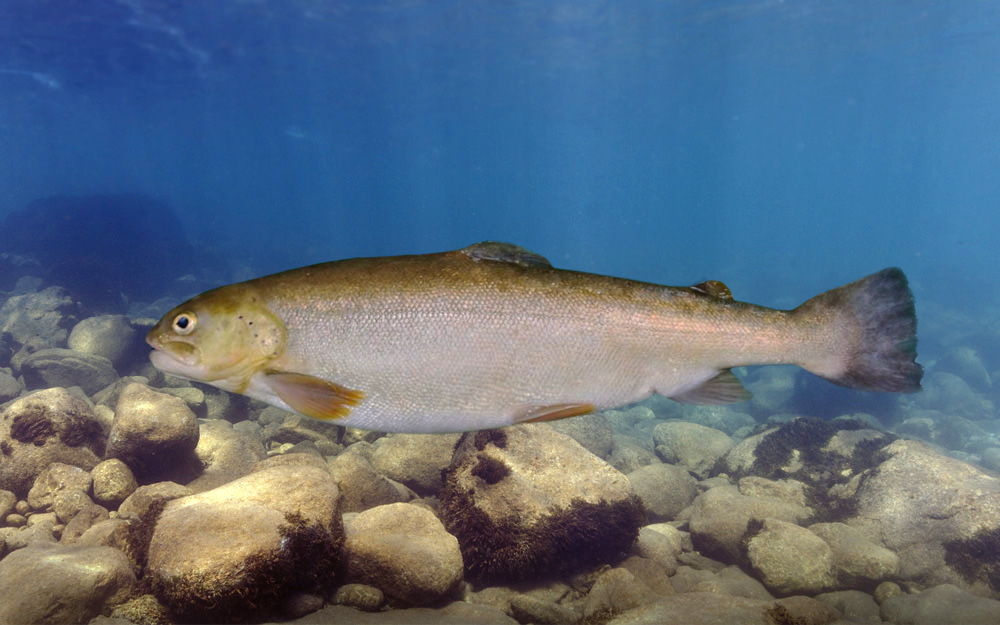Lake Garda carpione
(Salmo carpio)

Classification
Salmo carpio, also known as the carpione (carpione del Garda or Lake Garda carpione) is a salmonid fish endemic to Lake Garda in Italy. It has been introduced to a number of other lakes in Italy and elsewhere but unsuccessfully in all cases. The population in Lake Garda has been strongly declining, and is considered critically endangered. The main threats are due to overfishing, pollution and possibly competition from introduced species such as Coregonus and other Salmonidae.
Biology
Adult lake trout outside the mating season are silvery with very few black spots on the body and almost none on the head. During the mating season some males develop a dark mottled body coloration. Garda lake trout reach a length of up to 50 cm (20 in). They live primarily in depths of 100 to 200 m (328 to 656 ft). They feed on zooplankton and bottom-dwelling crustaceans in summer. Males and females reach sexual maturity at two or three years. The mating takes place every one to two years. The spawning takes place either winter or summer at a depth of 50 to 300 metres (160 to 980 ft) in the vicinity of underwater springs. The maximum age for this fish is five years.










